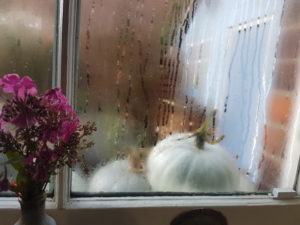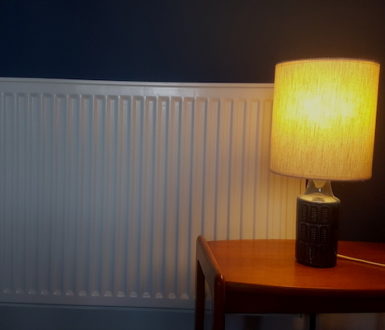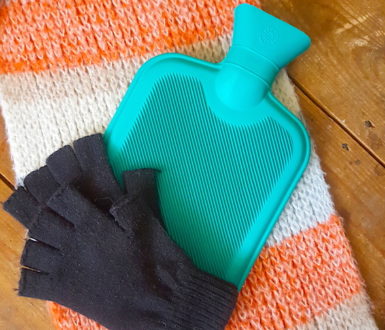How to get rid of condensation

It is really common to see water on the inside of the windows in Britain, especially on cold days. This is called condensation and it happens when the humidity in your home is too high.
When you’re trying to stop it happening, it is helpful to know a bit more about why it happens.
- Daily life (including washing, cooking, showering, drying clothes, breathing and gas heating) puts a lot of water into the air. Some studies estimate that 4 people can create as much as 14 litres of moisture in the air per day! All of this needs to go somewhere.
- Water in the air condenses on cold surfaces. This usually means windows, but it can also be walls or even fabrics. Sometimes mould will start to grow. This can be toxic and must be dealt with immediately.
- The problem is more obvious in cold or badly insulated homes.
Many modern houses are well insulated but badly ventilated, so warm damp air gets trapped. Older houses have better ventilation but are badly insulated, so the walls will be colder than modern homes. It is useful to jave a hygrometer (which measures the water in the air). Aim for about 40-50% relative humidity during the winter months.
Here are some tips on how to reduce moisture in the air:
- Even on a wet day in winter, the air outside will probably have less moisture than the air in your home because it is colder. Therefore, opening your windows for at least 15 minutes a day can help because warm damp air from your home will be replaced by drier air from outside.
- Wipe the moisture off windows in the mornings – if you don’t, it can stay there all day because the window surface is so cold.
- Never let your home get completely cold in winter. Keep your heating on a low temperature (about 12-15°C) even at night and when you are out or away on holiday. This will help to keep the walls warm and prevent mould.
- Reduce the amount of water you put into the air. Boil saucepans with a lid on to prevent steam escaping. Keep doors to kitchens and bathrooms shut to stop the wet air moving around the house. If you don’t have a tumble dryer, dry your washing outside your home (on a clothes line or at a launderette).
- Showers produce lots of steam so keep them quick and open the bathroom window afterwards. Alternatively, you could wash in a bath or using a basin of water – both of these produce less steam than a shower.
- Don’t store clothes or books against outer walls.
- Get a dehumidifier if you have constant condensation problems and run it for several hours a day.
- If you see mould growing, remove it immediately using mould-killing spray and a single-use cloth. Mould can spread around the house so make sure you carefully throw all cloths away in a sealed bag after you have wiped the mould. Tell your landlord about the mould if you have a rental house.



